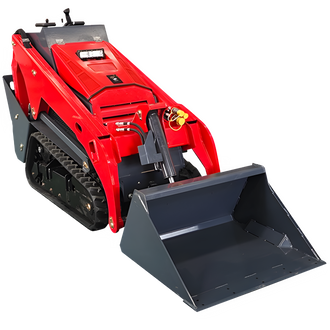Exploring the Allure and Pitfalls of Buying Direct from China for Canadian Importers
You've seen the videos, scrolled through Alibaba, or heard the buzz: powerful mini skid steers, seemingly comparable to machines costing upwards of $40,000 or $50,000 CAD from established Canadian dealers, available directly from China for a fraction of the price – sometimes advertised for under $10,000 USD (around $13,500 CAD before fees) at the factory gate.
It's an incredibly tempting proposition, especially if you're a Canadian homeowner, a hobby farmer, or run a small operation where every dollar counts. The appeal is obvious: why spend $40k+ on a big-name brand when a seemingly similar machine appears available for less than half that, leaving significant budget for attachments or other needs? This is the core logic driving many to consider the Do-It-Yourself (DIY) direct import route.
But before you wire money overseas, it's crucial to understand the full picture specific to importing into Canada – the process, the potential pitfalls, and the real costs involved.
The Direct Import Process (Simplified)
On the surface, ordering direct might seem straightforward:
-
Find a Supplier: Browse online platforms like Alibaba or Made-in-China, or connect directly with manufacturers.
-
Communicate & Customize: Discuss specifications, potentially request customizations (colors, decals), and agree on terms.
-
Order & Wait: Place your order, make payments (often requiring wire transfers), and wait for manufacturing and shipping.
Some suppliers might even provide videos of your machine being built, from laser-cut steel plates to final testing, adding a layer of transparency.
The Big "BUT": Risks, Costs, and Challenges for Canadians
That enticing sub-$10k USD factory price is almost certainly not your final landed cost in Canada, and the journey is paved with potential problems:
-
The True Cost: That initial price tag usually only covers the machine itself at the factory gate (often an "FOB" price). You still need to account for:
-
International Shipping: Ocean freight to a Canadian port (like Vancouver or Montreal) is complex and costly, often thousands of dollars.
-
Insurance: Protecting your investment during transit.
-
Customs Brokerage Fees: Paying a professional licensed by the CBSA to handle import paperwork is highly recommended.
-
Duties & Taxes: Standard import duties based on the HTS code (often low or zero for machinery under MFN rates, but needs verification) plus federal GST and applicable Provincial Sales Tax (PST) or Harmonized Sales Tax (HST).
-
The Surtax Situation: While Canada doesn't have the broad Section 301 tariffs the US uses against China, the Canadian government has implemented significant surtaxes on certain Chinese goods, like steel and aluminum products and EVs. While heavy machinery might not be directly targeted yet, the trade environment is volatile, and new measures could impact future imports. These tariffs/surtaxes, mentioned by importers as a current "challenge", can dramatically inflate the final price.
-
Port & Handling Fees: Various charges (terminal handling, storage, etc.) can add up upon arrival at the Canadian port.
-
Inland Transport: Getting the crated machine from the port to your location within Canada.
-
-
Logistical Hurdles: Coordinating international shipping, managing Canadian customs documentation (and potentially needing a Business Number even for personal imports), and dealing with potential delays requires significant time, effort, and knowledge. Errors can be costly.
-
The Quality Gamble: While videos might show modern factories, quality control across Chinese manufacturers is inconsistent. You might receive a well-built machine, or you might face immediate issues, defects, or components that don't meet spec. There's limited recourse if things aren't right upon arrival.
-
The Support Black Hole: This is arguably the biggest risk. When (not if) something breaks, where do you turn? There's typically no Canadian dealer network for parts, no local technicians familiar with the specific model, and enforcing a warranty claim with an overseas manufacturer is often impractical or impossible. You are the support network.
-
Compliance Roulette: Ensuring the machine meets mandatory Canadian safety standards (like CSA approval) is your responsibility as the importer. Non-compliant machines can be denied entry by the CBSA or face operating restrictions. Verifying engine emission compliance also remains crucial.
Is the Saving Worth the Risk (in Canada)?
The direct import path offers the allure of massive upfront savings, making powerful equipment accessible to Canadians shut out by major brand pricing. However, it transforms the buyer into an importer, logistics manager, customs expert, quality controller, and mechanic – roles fraught with complexity and financial risk.
So, can you get a mini skid steer showing a sub-$10,000 USD factory price? Maybe. But the real question for Canadians is: what's the true landed cost in CAD after shipping, brokerage, duties, GST/HST, and potential surtaxes, and are you prepared to handle the significant risks and lack of local support that come with it?






